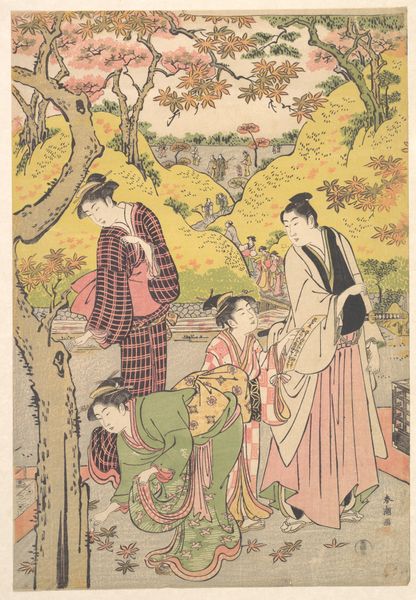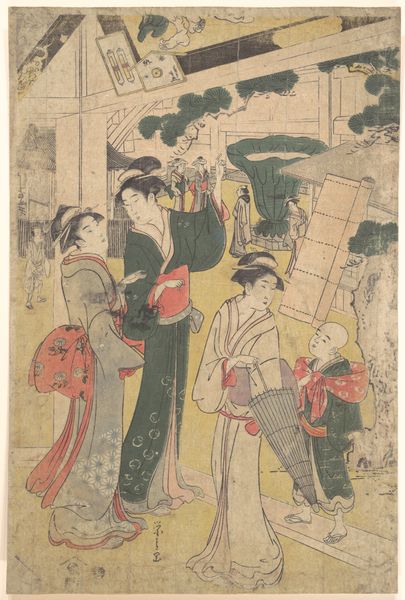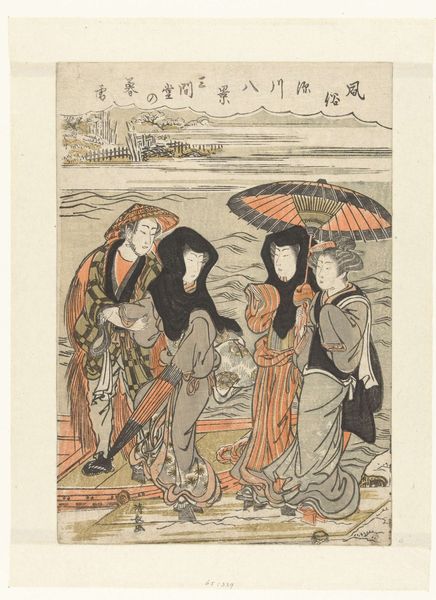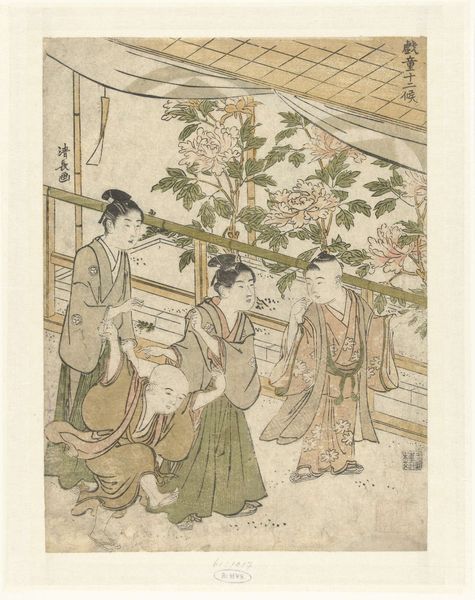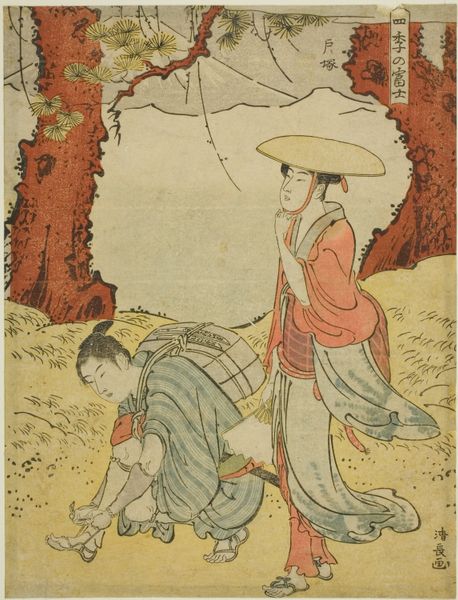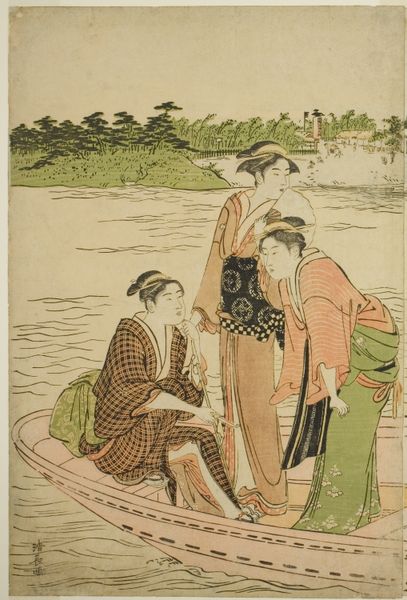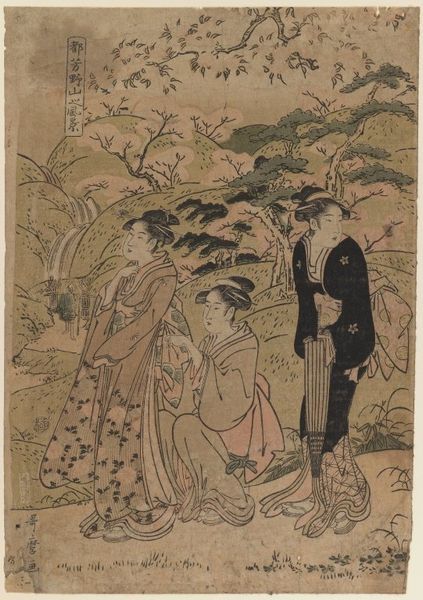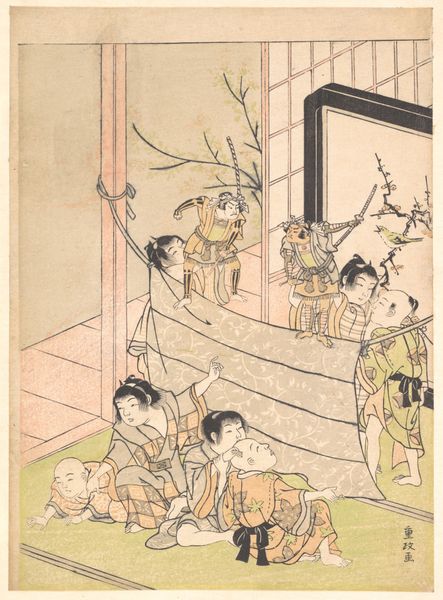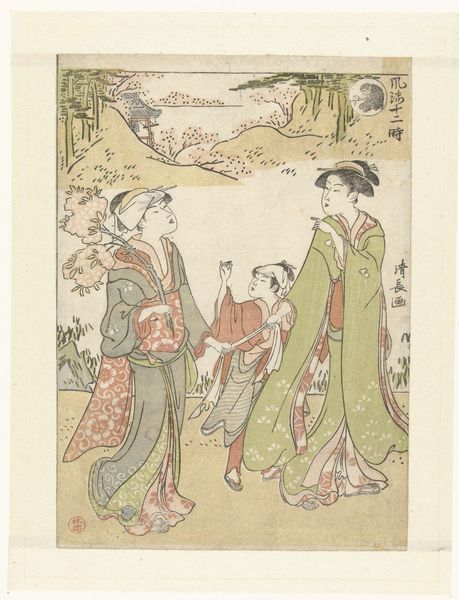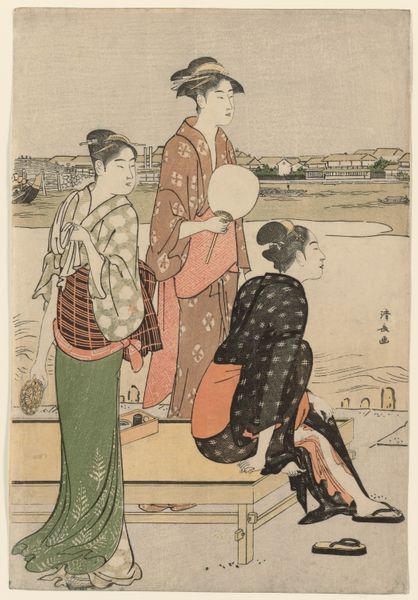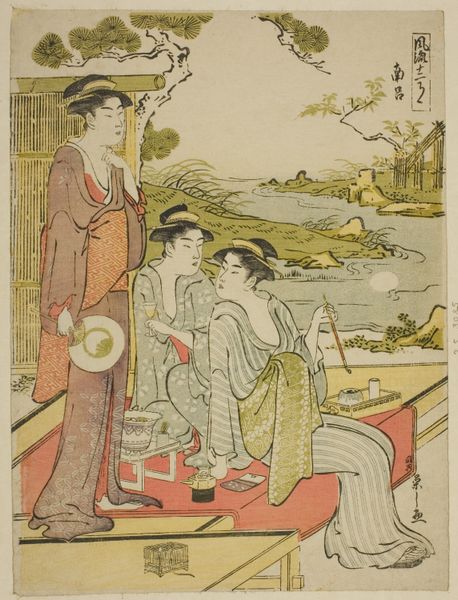
print, woodcut
#
portrait
# print
#
asian-art
#
landscape
#
ukiyo-e
#
figuration
#
group-portraits
#
woodcut
Dimensions: height 326 mm, width 227 mm
Copyright: Rijks Museum: Open Domain
Curator: This tranquil woodcut print by Kitagawa Utamaro, created around 1788 to 1790, offers a glimpse of Shichirigahama beach in Kamakura. It resides now within the Rijksmuseum's collection. Editor: It’s a calming scene; a tableau vivant of sorts, the figures gracefully posed against that misty landscape. What immediately strikes me is the careful composition; the strong diagonal line pulls you across the image, inviting you into their moment by the sea. Curator: Precisely! This ukiyo-e print captures a unique cultural moment. While landscapes are traditional, the prominent focus on figures marks Utamaro's signature style. You can see that echoed in the idealized beauty in his celebrated portraits. These details weren’t just about aesthetics but rather reflect the rising merchant class and their appreciation for leisure activities during the Edo period. Editor: The parasol and wide brimmed hat act as shields of status, delineating a social hierachy, of sorts. But beneath that umbrella of status, I wonder about those little crabs. Children today still hunt for crabs by the shore...what meaning would those animals hold at this time, if any? Is the artist suggesting an allegory? Curator: The crabs certainly pique curiosity. It's a visual grounding, reminding us of the everyday while these figures, possibly courtesans or wealthy patrons, are slightly removed from that reality. The distant boats and shoreline serve as reminders of Kamakura's importance as both a seaside and politically vital location during the period. Editor: This composition truly blurs boundaries, as an earthly space holds allegorical symbolism in what becomes a reflection on societal norms and power. I could look at this for hours to decode meaning in the simplest of items depicted on the shores. Curator: A lasting and engaging observation of Japanese society through such subtly potent symbolism, wouldn’t you agree? Editor: Absolutely! It highlights how even leisure could become an arena for reinforcing, but perhaps subtly questioning, social structures.
Comments
No comments
Be the first to comment and join the conversation on the ultimate creative platform.
